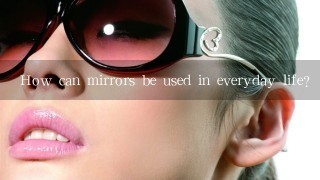How can mirrors be used in everyday life?

Mirrors have a wide range of uses in everyday life, both practical and decorative. Here are some examples:
Practical Uses:
- Self-reflection: Mirrors allow us to see our own reflection, helping us identify facial features, expressions, and any issues with our appearance.
- Grooming: Mirrors can be used for various grooming tasks, such as checking hair length, shaving, and applying makeup.
- Entertainment: Mirrors can be used for various entertainment purposes, including playing games like hide-and-seek or staring into a mirror for entertainment.
- Communication: Mirrors can be used for communication purposes, such as checking the time or looking into a store window.
- Security: Mirrors can be used for security purposes, such as deterring crime or monitoring a property.
Decorative Uses:
- Decoration: Mirrors can be used to add visual interest and depth to a room.
- Lighting: Mirrors can be used to create the illusion of more space or to reflect light in a specific direction.
- Art: Mirrors can be used to display artwork or photographs in a unique way.
- Accent: Mirrors can be used to accent a specific feature or to create a focal point in a room.
Other Uses:
- Medical purposes: Mirrors can be used in medical procedures for various diagnostic purposes.
- Construction: Mirrors are used in construction for various purposes, such as checking the alignment of walls and floors.
- Photography: Mirrors can be used in photography for various purposes, such as creating reflections or isolating subjects.
Overall, mirrors have a wide range of uses in everyday life, both practical and decorative. By understanding these uses, you can find creative and practical ways to incorporate mirrors into your daily routine.





















































